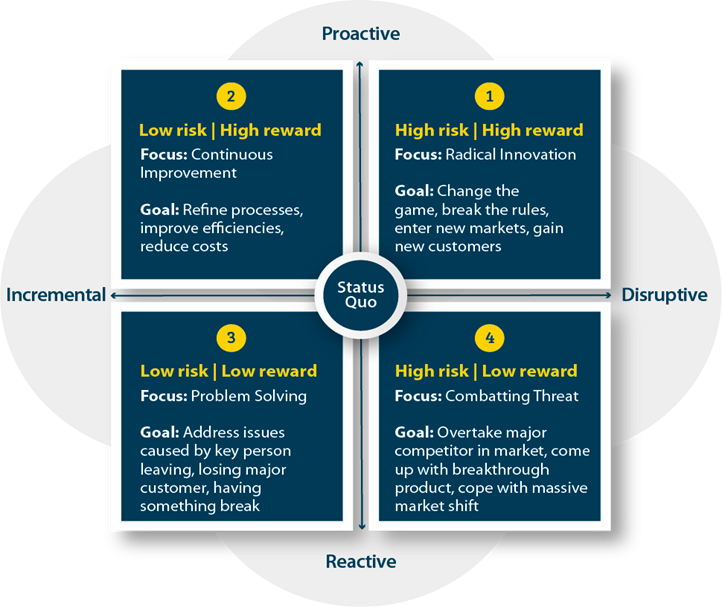|
Better to be Kind or Better to be Right?

Earlier this week I heard someone say that it is better to be kind than right and it keeps rattling around in my brain. In the business world, being right is extremely important and often necessary for survival. The market is hard on businesses that get it wrong too often. From an early age, we are taught to do what’s right so it is natural for us to want to “be” right. The mental feeling of being right is justification for our ideas as well as our
position on whatever topic or issue at hand. Being right however can bring consequences that are undesired and unintended. If being right means someone else is wrong, our brain makes decisions to support this belief. My mind makes me want to convince the other person that they are indeed wrong. I become blinded by my own perspective and I can no longer see another. I begin to arrange my thoughts and eventually words to support my position. At this point, how
effective am I at understanding anotherperson’s point of view? Being wrong or right is an opinion of reality rather than reality itself. It is all in our brain. Is it right for a mother bird to let one baby starve so that two others might survive? Is it right for a parent to donate all their belongings to charity instead of leaving it for a child’s inheritance? What’s right?
Being right and doing right can align with being kind, however when the concepts diverge, we have a decision to make. We are at a mental tipping point and we rationalize not being kind as acceptable behavior. It can sound like “I was just doing my job” or “It was the right thing to do”.
Many people confuse kindness with weakness. True strength comes from not having to be right. Others consider being wrong as an indication of our ignorance. Both of these are rooted in human insecurity. Join me in getting over this human frailty. In most cases being right or wrong is irrelevant when it comes to being kind. When making difficult decisions, we can always choose kindness.
Have a wonderful Memorial Day weekend!
__________________
For CEOs and Business Owners...
The Vistage Innovation Framework
Understanding the risks and rewards of an innovation strategy
“What matters most is that your company develops an intentional approach to innovation, and that you’re aware of the risks and rewards associated with the strategy that you choose.” – Joe Galvin, Vistage chief research officer
Disruptors, the titans of innovation, are everywhere these days. Pick up a copy of Forbes, and Elon Musk is gracing the cover. Turn on CNBC, and Marc Benioff is the guest of the day. Scroll through Twitter, and Richard Branson is being retweeted a million times.
There is, of course, good reason for all the attention. They are upending the status quo and doing so at a more frequent clip. Years ago, this phenomenon seemed more contained, as Blockbuster got Netflixed, the Blackberry got iPhoned, taxis got Ubered, and brick-and-mortar retailers got Amazoned. Today, disruption is more ferocious and widespread. And in this new reality, there are two main truths:
Companies that hold on to the status quo for too long will pay for it.
Disruption can happen to any business at any time. As a result, companies need to change how they think about disruption and how they approach innovation.
Why continual innovation is necessary
The phrase “Innovate or die” might be cliché, but it’s valid. To compete with disruptors like Amazon or Apple, companies have to consistently innovate.
This is true for all companies, even the ones that seem unstoppable. In his bestseller Good to Great, Jim Collins profiles a series of companies that outperformed the market by a significant multiplier (on average, 6.9 times) over the course of 15 years. One of those companies was Circuit City, which from 1982 to 1997 had a stock performance that was 18.5 times better than the overall market. Try finding a Circuit City today.
Yes, continual innovation is a challenge, especially when you have other competing demands. As a CEO, you’ve got people to lead, customers to engage, and operations to run. But the innovations in the way you do business don’t have to alter the course of civilization. Innovation falls on a continuum, and it has different degrees of value in different contexts. What matters most is that your company develops an intentional approach to innovation, and that you’re aware
of the risks and rewards associated with the strategy that you choose. A framework for innovation
Innovation is not just about doing something different. It’s about doing something better, whether that’s improving internal workflow to increase profitability or serving a customer need in a new way that increases market share.
When deciding on an innovation strategy, companies should consider two categories of opposing forces:
Incremental vs. disruptive: Incremental innovation consists of small improvements to your company’s existing products, services, or processes for the sake of efficiency or productivity. Disruptive innovation unseats established businesses by creating a product or service that leapfrogs the status quo or is accessible to a new population of customers—usually because it’s offered at a lower cost or is a new solution to your customers’ challenges.
Proactive vs. reactive: Proactive innovation is intentional and planned, and it typically requires a commitment of people, time, money, and resources. Reactive innovation occurs on the fly and is triggered by an event, such as when a large client cancels a major contract. At the center is the Status Quo zone. This is mediocrity perpetuated. Companies that fall into this area believe that what made them successful will keep them successful. The closer you are to this area, the greater your
chance for disruption. Let’s explore the risk-reward ratio of each quadrant:

Quadrant 1: Proactive/Disruptive Risk/reward ratio: High risk, high reward
Company profile: These companies identify and reach an untapped customer segment by delivering an offering that’s more affordable/accessible than anything else on the market. Salesforce, for example, took down Siebel—and an entire category of enterprise software—with its revolutionary cloud-computing applications.
Potential risks: This approach typically requires a major investment up front without a guarantee of return. Innovations have the potential to fail miserably (remember the “new Coke” of 1985?), harming both revenues and reputation.
Potential rewards: As the Salesforce example suggests, the rewards can be tremendous. You can become a category-defining company and a recognized leader in your market.
Quadrant 2: Proactive/Incremental Risk/reward ratio: Low risk, high reward
Company profile: These companies are motivated to continuously improve everything they do. They have a strong culture of innovation and typically have teams and leaders that are specifically dedicated to innovation.
Potential risks: This approach requires a commitment of time, resources, and talent. However, timelines tend to be shorter and investments tend to be fewer in comparison to the Proactive/Disruptive strategy.
Potential rewards: This approach can lead to a high-performance organization, where quality and efficiency permeate all aspects of the business.
Quadrant 3: Reactive/Incremental Risk/reward ratio: Low risk, low reward
Company profile: These companies tend to operate without innovation leadership or a formal innovation team. Innovation projects may be present, but they don’t progress—because either daily work gets in the way, resources are reallocated, timelines fall behind, or there’s no accountability.
Potential risks: Competitors that are adept at innovation are well positioned to steal market share—and your customers.
Potential rewards: Upfront costs are lower because you don’t have a dedicated team in place.
Quadrant 4: Reactive/Disruptive Risk/reward ratio: High risk, low reward
Company profile: These companies wait until something bad happens to try to come up with an innovative idea. For example, if a national player moves into their best market, they try to come up with a game-changing innovation on the fly.
Potential risks: It’s very difficult to develop disruptive innovations in a moment of crisis. You’re likely to weaken your customer base and lose revenue at the same time.
Potential rewards: If you get lucky, you can come up with an innovation that keeps your company in the game. And if you’re even luckier, the innovation can potentially redefine your company.

Leading the Tribes Video
Leading the Tribes Training - Book my 1-day class at your location for managers and supervisors.
Leading the Tribes Keynote Speech - Book my 1-hour speech for your event.
Call (903) 295-7400 Today!
-------------------------------
Keeping Top Talent Video

-----------------------------

Need a Keynote Speaker?

I'm always amazed at how fun you can make learning!
Tessa Conrad, Pak-Sher
Your excitement and energy as a speaker is amazing. Hearing you speak on your years of experience and insights on leadership and generational change was very relevant and something that we can all learn from and apply to our organizations.
Cliff McDaniel, Louisiana CPA Oil and Gas Conference
It was the best presentation that I have attended so far, You are the best speaker ever . I am so impressed that I have ordered 2 of your books on Amazon. So thank you for making a difference in people’s personal and professional lives.
Lovely Chandla, Hilton
John Grubbs' keynote message is powerful! John is able to clearly convey his knowledge and foresight on the generational changes that affect ALL of us. I had many A-ha moments with his vivid examples. We continue to talk about what his message taught us to this day. You will have to reach for a tissue to wipe tears of emotion and laughter. John's message is memorable and inspirational!
Maria Gallegos, Texas Chemical Council
Call John Grubbs (903) 295-7400


|






